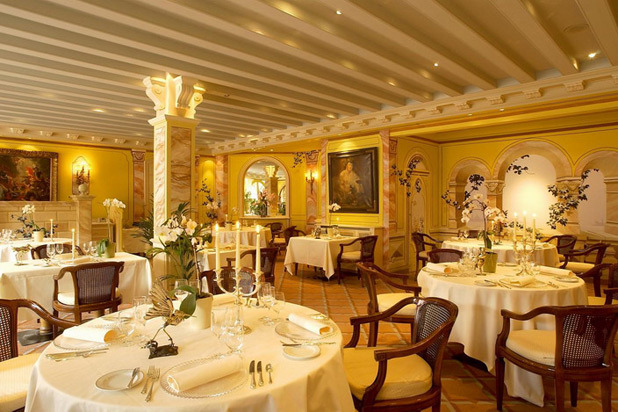20 Best Restaurants In Germany
If you're wondering why this opulently furnished restaurant, with its winter garden and mountain terrace — located in the Residenz Heinz Winkler, a colorfully ornamented hotel southeast of Munich in the Bavarian Alps — is named for an Italian city... Well, owner-chef Winkler was actually born in Italy, in Brixen (or Bressanone), a city in the South Tyrol, German-speaking but part of Italy since after World War I. Winkler, who honed his craft in the kitchen of Paul Bocuse, nonetheless has made his career in Germany, where he became the youngest chef (and also the first Italian-born chef) ever to receive three Michelin stars, back in 1981. This was at the famous Tantris in Munich. In 1991, Winkler left the big city to open this mountain retreat. His cooking has lost none of its confident skill, though, as anyone who enjoys his foie gras with quince and pine nuts, mildly smoked sturgeon fillet with wasabi and char caviar, Bresse pigeon with violet mustard and almonds, or warm chocolate cake with rum cream and pickled cherries will discover.
19. Restaurant Amador (Mannheim, Germany)
Michelin-three-star chef Juan Amador pays homage to his Spanish roots with such dishes as roast Mannheimer pork with pa amb oil (Catalan bread with olive oil) and Caesar salad; crab with peas, goat cheese, and olive brittle; and a mar y montaña (Spanish "surf and turf") combining sole with beef marrow, garnished with fried onions and saffron. Other unusual specialties at Restaurant Amador include asparagus with jumbo shrimp, ice hollandaise, and elderflowers, and Asian-style suckling pig with eggplant, chickpeas, and salted lemon.
18. Bareiss (Baiersbronn-Mitteltal)
Claus-Peter Lumpp's Michelin-three-star in the Black Forest serves Black Foresty-seeming fare, hearty and full of flavor. That might mean Alsatian quail with Savoy cabbage, chestnuts, and black-smoked bacon; fried scallops with pumpkin sauce and black chanterelles; or saddle of roe deer with blini, sharing a plate with braised venison shoulder with cauliflower purée.
17. Alter Haferkasten (Frankfurt)
This family-owned Italian restaurant has been winning dedicated customers for more than 50 years. Saverio Pugliese and his son Francesco serve food so quintessentially Italian that you might momentarily think you're near the Arno or the Tiber, not the Main. Classic vitello tonnato, white and green asparagus with shrimp and lemon vinaigrette, baby calamari in spicy tomato sauce, homemade tortelloni filled with ricotta and spinach in a sage butter sauce, homemade gnocchi with pesto, whole fish of the day baked in a salt crust, veal kidneys with red wine sauce, oxtail stewed in nebbiolo, lemon sorbetto with raspberries — leave thoughts of German cooking, old or new, behind when you walk into this delightful place.
16. Der Pschorr (Munich)
All right, this isn't exactly a restaurant: It's a huge, always bustling, very traditional brewery — but how could you visit Munich, Germany's great beer capital, and not try this classic establishment? The beers are nonpareil and the food is just the kind of thing you want to eat with these impeccable brews: homemade obatzda cheese spread with chive bread, cold roast pork with freshly grated horseradish and sour pickles, grilled Nürnberg bratwurst with barrel-aged sauerkraut, homemade spätzle with mixed cheeses and crisp onions — even, if you're in the mood, grilled marinated steak with herb butter.
15. Katerschmaus (Berlin)
With its open kitchen and views of the River Spree from the top floor of the building housing Berlin's trendy Katerholzig club (on the site of the legendary, now-defunct Bar 25), this softly lit, faintly hokey restaurant — the staff dresses in theatrical regalia — offers food that seems firmly anchored in German tradition, even as it expresses a measure of modern creativity. Jerusalem artichoke cream soup with suckling pig cheeks; an autumn salad of home-dried grape tomatoes, marinated pumpkin, caramelized pumpkin seeds, and basil oil and apple dressing; beef tartare with marinated egg yolks and knoblauch crouton; and white halibut with beets and pumpernickel dumplings — this is food you wouldn't be apt to find in any other country.
14. Restaurant Français (Frankfurt)
One of numerous restaurants at Frankfurt's luxurious Steigenberger Hof Hotel, this casually elegant Michelin-one-star may be (as its name suggests) French in inspiration, but Patrick Bittner's cooking mixes culinary cultures with energy and flair to produce a first-rate example of contemporary German cooking. Alsatian foie gras is enhanced with muesli, yogurt, and brioche crumbs; Icelandic char is given an earthy cast with baby turnips and smoked birch oil; good old American beefsteak comes with a romaine cream. Bittner's dining room is welcoming, with its century-old oak flooring, its handsome fireplace, and its French paintings on the walls, and the wine list here is first-class.
13. Sonnora (Dries)
At his inviting Michelin-three-star place in the Eifel Mountains, in western Germany, chef Helmut Thieltges applies classical French technique to ingredients from all over his own country and elsewhere in Europe at Sonnora. Tuna tartare with crisp potatoes and caviar, medallions of Breton lobster resting on a bed of summer vegetables dressed in yogurt cream, fillet of sea bass with crayfish tails and elderflower-scented white tomato nage, and crisp-fried sweetbreads with chanterelles and a chartreuse of macaroni are but a few of his sophisticated specialties.
12. Gourmetrestaurant Lerbach (Bergisch Gladbach)
Chef Nils Henkel's watchwords are "nature" and "naturalness." He pays special attention to vegetables, uses herbs and spices (both Middle European and exotic), pays close attention to seasonality, and specializes in clean, concentrated flavors and novel textures. There is a Noma-like purity to his "cabbage and roots," with beets, beechnuts, and turnip tops, or his reinvention of Greek salad to include squid, red shrimp, and cucumber with sheep's milk yogurt. His combinations at Gourmetrestaurant Lerbach go further afield when he combines scallops with sea urchin, lettuce, and smoked pear, or duck liver with raspberries, macadamia nuts, and green peppers — and the breadth of his imagination may be seen with such dishes as roasted sea bass with smoked ox marrow, chives, cauliflower, and caviar, or Eifel lamb with pepper juice, celeriac ciabatta, and pine nut cream. This is imagination in the service of flavor.
11. Restaurant Français (Frankfurt)
One of numerous restaurants at Frankfurt's luxurious Steigenberger Hof Hotel, this casually elegant Michelin-one-star may be (as its name suggests) French in inspiration, but Patrick Bittner's cooking mixes culinary cultures with energy and flair to produce a first-rate example of contemporary German cooking. Alsatian foie gras is enhanced with muesli, yogurt, and brioche crumbs; Icelandic char is given an earthy cast with baby turnips and smoked birch oil; good old American beefsteak comes with a romaine cream. Bittner's dining room is welcoming, with its century-old oak flooring, its handsome fireplace, and its French paintings on the walls, and the wine list here is first-class.
10. VAU (Berlin)
This stylish establishment in central Berlin's Mitte district — home to the Brandenburg Gate, the Reichstag, Unter den Linden, Museum Island, and other city landmarks — merits a Michelin star for its savory cuisine, neither conventional nor avant-garde. Chef Kolja Kleeberg uses locally sourced ingredients whenever possible, and fashions them into such superb dishes as rabbit with lentils, marinated quince, and lamb's lettuce; quail with chickweed, pancetta, and radishes; velouté of Jerusalem artichoke with smoked mackerel and apples; crispy char with pumpkin, coriander, and kumquat; saddle of Brandenburg venison with cep cream, juniper sabayon, and clover; and sour cream soufflé and ice cream with elderberries. VAU's pan-European wine list is particularly noteworthy for a number of unusual German bottlings, among them Franz Keller Grauburgunder, Bernhard Huber Chardonnay, Weingut Amalienhof Riesling–Gewürztraminer Trocken, and Weingut Rings "Das Kleine Kreuz" Syrah from the Pfalz.
9. Spindler & Klatt (Berlin)
Spindler & Klatt is a riverside Asian fusion restaurant (the outdoor terrace is a marvel), serving casual dishes like venison sukiyaki with baked pumpkin; grilled black tiger prawns with Caesar salad; salmon sashimi with avocado, black sesame, and wasabi; soy-marinated Atlantic cod with puffed rice risotto; and haunch of veal with mashed wasabi and roasted shiitakes. That's until about 11 in the evening, that is — then it turns into a nightclub, kicking into overdrive party mode, with music supplied by techno, house, and trance music DJs until the wee hours.
8. Vendôme (Bergisch Gladbach)
Joachim Wissler is Germany's chef of the moment — its "chef of chefs," according to an accolade given him by one hundred of his colleagues earlier this year. At his restaurant in the Althoff Grandhotel Schloss Bensberg, which occupies an 18th-century hilltop castle just northeast of Cologne, he combines French and German flavors and techniques with an international flair. His mission, he has said, is both to provoke diners and to evoke past taste-memories in them. To achieve this, he anchors his imaginative creations with earthy, Germanic accents in dishes like trout with red-cabbage foam, ham gelatin with rose petals and chanterelles, a square of crisp-skin suckling pig cooked in the Spanish style combined with foie gras sautéed with soy sauce, a larger serving of young pork with a beer soufflé and puréed peas...
7. Die Schwarzwaldstube (Baiersbronn)
Carpaccio of wild shrimp with cucumber jelly, flying-fish roe, and cilantro vinaigrette; ragout of snails from the Swabian Alps with garlic chips and crispy bacon on parsley emulsion; grilled scallops with Jerusalem artichoke purée and truffle butter... You can tell from a look at the menu at Die Schwarzwaldstube that chef Harald Wohlfahrt, one of the most esteemed of Germany's Michelin-three-star chefs, isn't afraid of forthright flavors and daring combinations of ingredients. The fact that his cooking is remarkably consistent, that dinner is served in a luxurious dining room full of carved woodwork and artist-designed furnishings, and that the celebrated wine list is one of the largest and best in the country just make everything all the more delicious.
6. Lohninger (Frankfurt)
Mario Lohninger worked for his fellow Austrian Wolfgang Puck at Spago in Los Angeles and for Guy Savoy at his eponymous gastronomic shrine in Paris and then earned fans in New York City as executive chef at the now-defunct Danube. In 2004, he took his culinary talents to Frankfurt, where he opened an unusual restaurant called Silk Bed, where diners reclined on bed-like couches, inside the trendy Club Cocoon, and later a more conventional one called simply Lohninger. Silk Bed closed earlier this year, but Lohninger is going strong, serving a kind of modern Austrian cuisine with international accents — like salmon sashimi with cucumber and miso, moistened with pumpkin seed oil; mountain cheese ravioli with chanterelles; monkfish with baby eggplant, roasted tomato, and cumin; a classic wienerschnitzel with cucumber and potato salads and cranberries; and Valrhona chocolate soufflé with maple syrup ice.
5. Relish (Berlin)
You'd expect to find a decent restaurant at the five-star Westin Grand Hotel, but in this airy but warmly furnished dining room, with a relaxing terrace open in good weather, chef Peter Hampl exceeds expectations with his smart, seasonally based fare, like his homemade ravioli with walnuts and fresh cheese; his baked sweet peppers with goat cheese, ratatouille, mushrooms, wheat risotto, and parsley foam; or his heroic presentation of roe deer, the saddle in a pancetta crust on potato–celeriac purée, the shoulder braised and served with glazed cabbage and cranberry jus.
4. Tantris (Munich)
Originally the preserve of one of the most famous of German chefs, Heinz Winkler, this opulent restaurant, with its over-the-top Asian-influenced décor (the phrase "tempe of gourmandize" occurs — as much because of the surroundings as because of the food), now merits two Michelin stars under the direction of chef Hans Haas. The vividly flavored, imaginative food includes such creations as veal terrine with carrots, pumpkin, and goose liver; confit skate with artichokes; Dover sole with roast Jerusalem artichokes; roasted langoustines with fennel ravioli; gratinéed saddle of lamb with favas and eggplant couscous; and elderflower soup and mousse with elderflower sorbet.
3. Borchardt (Berlin)
Borchardt is a Berlin institution. Though the fabled original, founded in the late 19th century, where everyone who was anyone went to eat and to see and be seen, was destroyed during World War II, the high ceilings, marble columns, and Art Nouveau accents of the present-day restaurant, a post-war reconstruction, give it an old-fashioned feeling. The menu is old-fashioned, too, offering things like some of the best oysters in town, simply cooked fresh fish dishes, and what is widely considered to be the city's best wienerschnitzel.
2. La Vie (Osnabrück)
Housed in an 18th-century building on this Saxon city's main square, this elegant modern-style restaurant offers beautifully presented, complex dishes of great refinement. Chef Thomas Bühner likes to work several variations on a single ingredient in his dishes. Try, for instance, his turbot, crab, and North Sea shrimp with yeast dumplings and broccoli two ways; his fricassée of Bresse chicken with rice and four kinds of peas; or his "head to tail" lamb, five different cuts cooked in different ways, moistened with miso cream. Those with a hearty appetite shouldn't miss Bühner's autumn special of saddle of venison with smoked beef marrow, boudin noir, beets, and ceps.
1. Aqua (Wolfsburg)
In a beautiful dining room at the Ritz-Carlton Hotel in Wolfsburg — hometown of Volkswagen — with an Andrée Putman interior furnished with Art Deco armchairs and floral still lifes by Robert Mapplethorpe, chef Sven Elverfeld creates visually stunning and unfailingly delicious modern-style food that reflects the world's best avant-garde innovations while remaining tied to culinary traditions from around Europe. Sample his smoked eel with pumpkin, green apple, and pumpkin seed oil; Greek-influenced rabbit pot au feu with white beans, spinach, feta, oregano, and lemon; Spanish-style take of foie gras with paella seasonings, Joselito ham, and Bomba rice; veal breast and sweetbreads with beets, rutabaga, lentils, and mustard; or hand-formed iced cheese dessert.



















